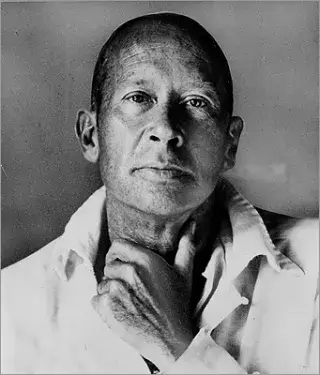Biography of E. E. Cummings

| date | place | |
|---|---|---|
| born | October 14, 1894 | Cambridge, Massachusetts |
| died | September 03, 1962 | Madison, New Hampshire |
E. E. Cummings, born Edward Estlin Cummings in Cambridge, Massachusetts, is one of the most innovative and influential American poets of the 20th century. His work is notable for its departure from traditional poetic forms and conventions, employing unconventional punctuation, syntax, and structure to explore themes of love, nature, individuality, and the relationship between the individual and the masses. Cummings's upbringing in a nurturing, intellectually stimulating environment, with a father who was a professor and later a Unitarian minister, played a significant role in shaping his artistic sensibilities. His early exposure to literature and encouragement from his family fostered a deep love for poetry and art from a young age. Cummings attended Harvard University, where he received both his bachelor's and master's degrees. It was at Harvard that he began to develop his voice as a poet, influenced by the modernist movement and writers such as Ezra Pound and Gertrude Stein. The outbreak of World War I marked a turning point in Cummings's life and career. Volunteering for the Norton-Harjes Ambulance Corps, he was sent to France, where he and a friend were unjustly detained on suspicion of espionage. The experience of being imprisoned in a detention camp profoundly affected Cummings and became the subject of his first major work, "The Enormous Room," a novel published in 1922 that detailed his experiences in captivity. Following the war, Cummings spent a significant amount of time in Paris, immersing himself in the city's avant-garde artistic community. It was during these years that he fully embraced his distinctive style, breaking from traditional forms and experimenting with visual and linguistic elements in his poetry. His first collection of poems, "Tulips and Chimneys," was published in 1923 and was followed by numerous others, including "XLI Poems" (1925), "is 5" (1926), and "ViVa" (1931), establishing Cummings as a major voice in American poetry. Despite the innovation and brilliance of his work, Cummings faced criticism from some quarters for his radical techniques and idiosyncratic use of language. However, he also gained a considerable popular following and was celebrated for his lyrical intensity, humor, and the profound humanity of his themes. Cummings's poetry and prose are characterized by their celebration of the individual, a deep-seated love for the natural world, and a critical eye towards societal conventions and constraints. Throughout his career, Cummings also explored other artistic mediums, including painting and playwriting, viewing the creative process as an integrated whole rather than compartmentalized into separate disciplines. His artwork, like his poetry, is marked by a vibrant, expressive style and an experimental approach. Cummings's later years were marked by recognition and accolades, including fellowships from the Academy of American Poets and the Guggenheim Foundation, as well as special appointments at Harvard University. Despite these honors, he remained a fiercely independent artist, dedicated to his unique vision and approach to art and poetry. E. E. Cummings died on September 3, 1962, leaving behind a body of work that continues to challenge, delight, and inspire readers and writers. His legacy as a pioneering figure in American poetry is secured by his relentless pursuit of a deeply personal artistic expression, one that broke boundaries and expanded the possibilities of language and form. Cummings's influence on modern and contemporary poetry is immeasurable, and his works remain a vital part of the American literary canon, celebrated for their originality, depth, and enduring beauty. Edward Estlin Cummings's work is characterized by a playful manipulation of language, incorporating unconventional capitalization and punctuation to create visual and auditory effects that enhance the meaning and emotional impact of his poems. Cummings's use of typography was not merely decorative but integral to the poetry's meaning, often requiring readers to engage with the text in novel and active ways. This experimental approach was complemented by his thematic exploration of love, individuality, freedom, and the relationship between the self and the natural world, themes that resonated deeply with readers and contributed to his popularity. Cummings's poems are marked by their lyrical intensity and emotional depth, qualities that emerge from his precise choice of words and innovative grammatical constructions. His poetry often reflects a romantic and transcendentalist philosophy, celebrating the individual's quest for self-expression and the sublime beauty of the natural world. Despite the complexity of his formal experiments, Cummings's poems are accessible and deeply human, driven by a sincere passion and a playful, sometimes irreverent, sense of humor. Through his work, Cummings invites readers to see the world anew, to question societal norms, and to appreciate the wonder of life and love. His legacy as a poet lies not only in his stylistic innovations but in his ability to connect with readers on a profound emotional level, making his poetry as vibrant and relevant today as when it was first published.
Feel free to be first to leave comment.